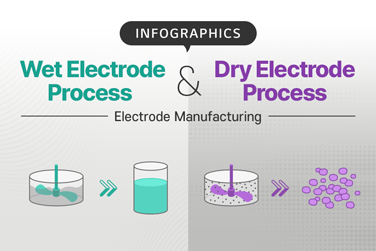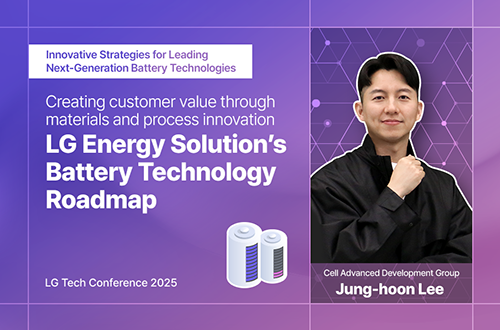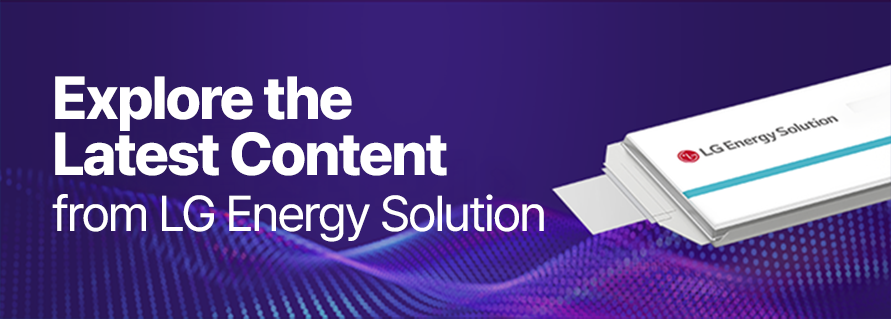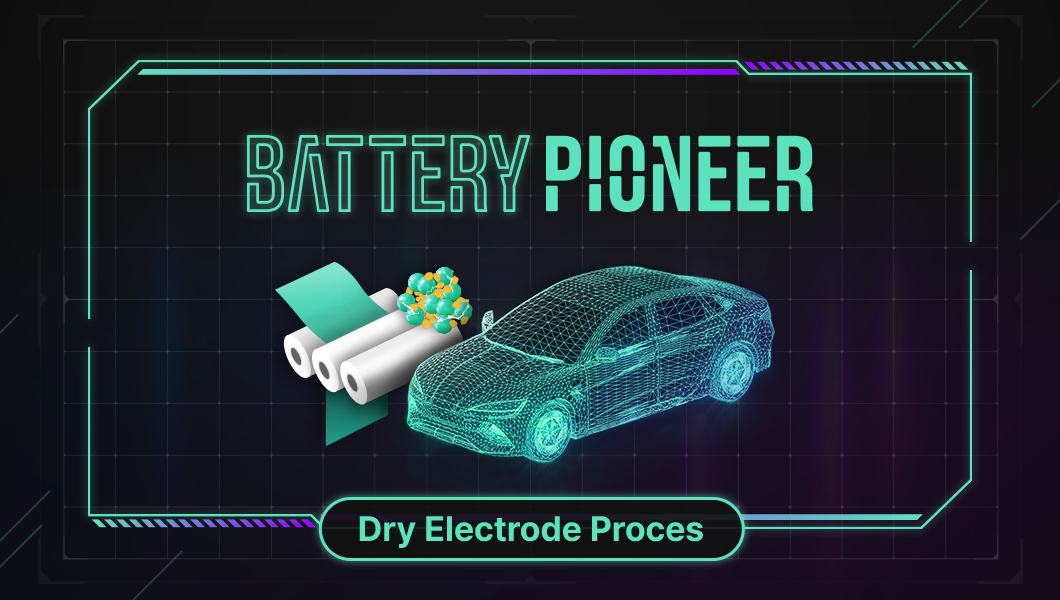
LG Energy Solution is pursuing various research and development approaches to create more innovative batteries. Across the industry, ongoing R&D efforts focus not only on improving battery performance, safety, and manufacturing efficiency through the core materials of the battery (cathode, anode, separator, electrolyte) but also on process innovation. In line with these efforts, the development of dry electrode process technology has been gaining traction. Today, let’s take a closer look at how the dry electrode process could drive a wave of change to the battery industry.
What is the Dry Electrode Process?
Electrode manufacturing, the process of creating the cathode and anode marks the first step in the battery manufacturing process. Just as high-quality intermediate products are essential for excellent final outcomes, precision in the initial step—the electrode manufacturing—is key to ensuring seamless progression through all subsequent phases. For this reason, electrode manufacturing is widely regarded as one of the most critical stages in battery production.
Electrode manufacturing involves mixing, coating, roll-pressing, and slitting and notching. Currently, most battery manufacturers use a wet electrode process. In this method, mixing involves combining the cathode and anode active materials, conductive agents, and binders with a solvent to form a slurry. In the coating stage, the slurry is then thinly coated onto aluminum or copper foil and dried in an oven at temperatures exceeding 100°C.
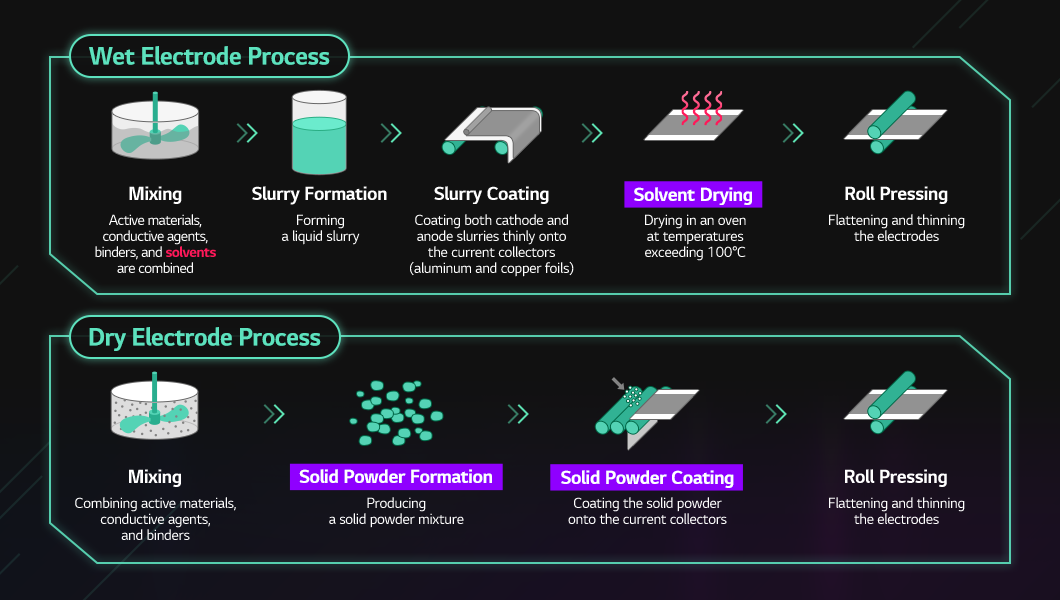
The dry electrode process utilizes a dry manufacturing approach for the mixing and coating stages. Unlike the wet process, in the dry process, the cathode and anode active materials, conductive agents, and binders are mixed without the use of solvents to form a solid powder. Various methods are being researched to apply the powder effectively. The key techniques include laminating a film made from the powder onto the current collector (the Maxwell method) or spraying powder onto the current collector and then pressing it through a rolling process (the powder coating method).
Reducing Manufacturing Costs and Increasing Energy Density with the Dry Electrode Process
So, why are so many battery companies striving to master dry electrode process technology?
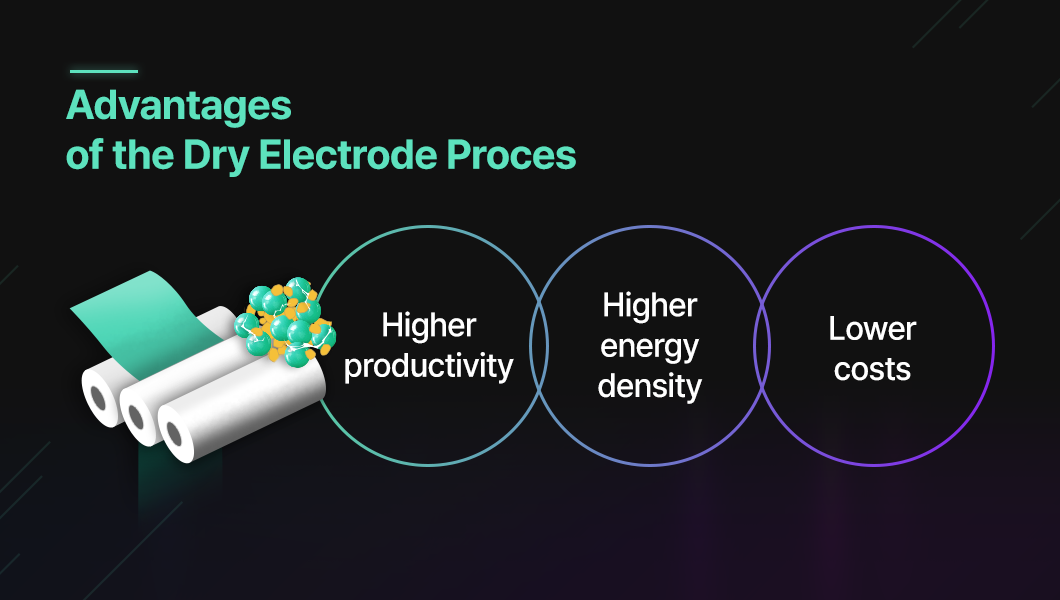
First, implementing the dry electrode process can reduce manufacturing and equipment costs while boosting productivity. By eliminating the need for solvent drying and recovery systems, it substantially cuts facility investment, process costs, and spatial requirements. Furthermore, the absence of a drying stage accelerates production speed and enhances overall efficiency, driving cost innovation across the entire battery manufacturing workflow.
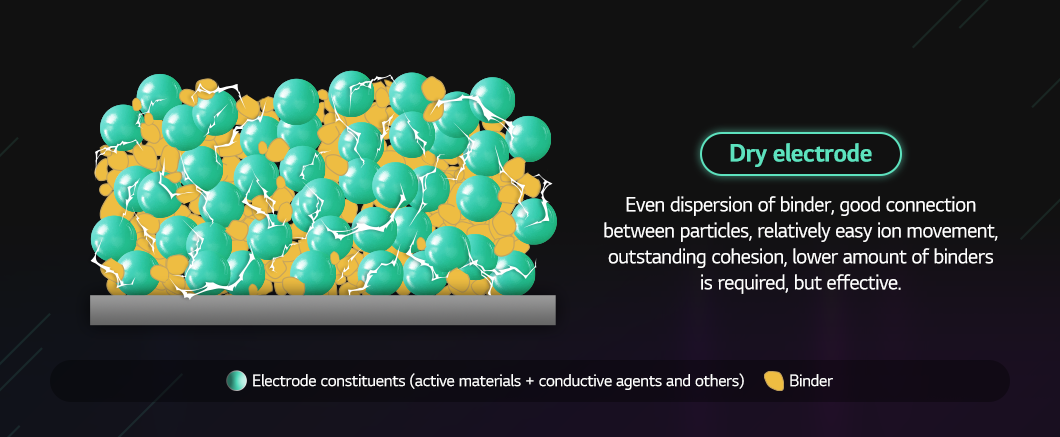
Furthermore, the dry electrode process holds the potential to achieve higher energy density in batteries compared to the wet electrode process. In general, thicker and denser electrodes result in greater energy density. However, the wet process faces limitations when producing thick electrodes. This is because, when a thick slurry is coated, a phenomenon known as migration can occur during the drying phase, where the conductive agent and binder move to the upper layer. If the conductive agent cannot function properly in providing electrical connectivity between active materials, it can ultimately compromise battery performance.
However, with the dry electrode process, the mixture of active material, conductive agent, and binder remains in a solid state, making it easier to produce thick electrodes. In the dry electrode process, there is no risk of migration during solvent drying, ensuring uniform distribution of the binder and conductive agent throughout the electrode’s thickness. This uniformity allows for an increased proportion of active materials, such as the cathode and anode, while reducing the use of separators and current collectors, ultimately leading to higher energy density.
Next-Generation Technology: LG Energy Solution Signals the Commercialization of the Dry Electrode Process
LG Energy Solution has made steady progress over the years in both battery materials development and the dry electrode process. The journey toward developing dry electrode process technology began about a decade ago. As the company sought innovations in electrode manufacturing, the need to develop a solvent-free dry electrode method naturally emerged. Leveraging its early start, LG Energy Solution has achieved remarkable advancements.
Currently, LG Energy Solution is preparing to advance from lab-scale process technology to pilot development. The company plans to establish a dry electrode pilot line at its Ochang Energy Plant by Q4 2024, secure mass production capabilities, and start commercial production by 2028. Following successful commercialization, LG Energy Solution also plans a phased rollout of the dry electrode process across its global manufacturing sites. This adoption is expected to reduce electrode manufacturing costs by 17% to as much as 30%. Additionally, the company is working on adapting the dry electrode process for various active materials and collaborating on developing this technology for solid-state batteries, while continuously expanding its R&D roadmap.
Today, we explored the dry electrode process, a technology seen as a game-changer. We examined its various advantages, including cost reduction and improvements in battery energy density. LG Energy Solution is at the forefront of commercializing the dry electrode process, backed by its solid technological foundation. Stay tuned for more updates as LG Energy Solution continues its relentless pursuit of technological advancements!
